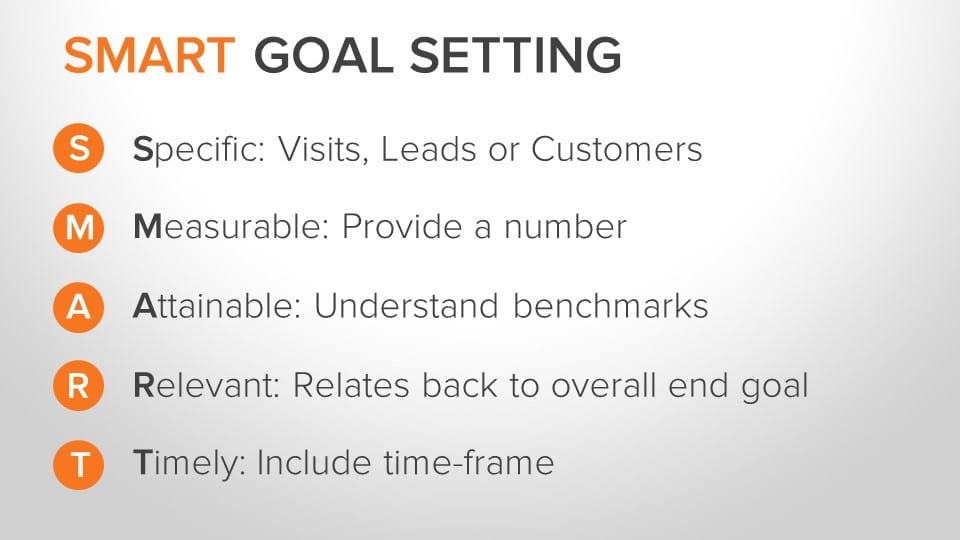The story of sales and marketing animosity is so common it’s cliche. From Sales yelling at Marketing about spending money and generating terrible leads, to Marketing yelling at Sales for being lazy and not working its leads, the list goes on and on with the classic complaints indicative of a soured Sales and Marketing relationship.
The good news is that more and more sales and marketing leaders are trying to change the way they’ve typically operated. The bad news is that changing the way a relationship operates is easier said than done. A soured Sales and Marketing relationship isn’t easy to turn around, especially when it’s the only one many sales and marketing leaders have known.
What are the hallmarks of this soured relationship? Here are some of the classic examples:
Sales think…
- Marketing doesn’t do anything that contributes to the company’s bottom line.
- Marketing doesn’t generate enough leads.
- The leads generated by Marketing are of terrible quality.
- It’s easy to do Marketing’s job.
- Marketing’s message and materials don’t reflect what happens on the front lines with real prospects
Marketing thinks…
- Sales are wasting leads by ignoring them or not working them deeply.
- Sales aren’t saying the right message or using the correctly branded materials.
- It’s easy to do a sales rep’s job.
- Sales do a bad job of communicating the company’s message.
It’s a never-ending blame game. Sales don’t hit its quota, so it points fingers at Marketing’s lead volume and quality. Marketing says it’s generating valuable leads — the sales team just needs to follow up with them.
These assumptions boil down to issues around communication, trust, and collaboration. Because of these problems, Sales and Marketing traditionally haven’t worked well together. Thankfully there are a number of things sales and marketing leaders can do to bring their departments’ relationship back from the edge.
11 Ways to Turn Around a Soured Sales and Marketing Relationship
1. Present the benefits of Sales and Marketing in terms of business results.
To start, use data to explain the impact of this poor relationship on business results. For example, when sales reps don’t follow up on marketing’s leads, they have to spend a third of their week sourcing leads instead of creating proposals, making them less productive. By focusing on the business results, the Sales and Marketing conversation will shift from assigning blame to each other to problem-solving together.
2. Set SMART goals for each team.
SMART goals are specific, measurable, attainable, realistic, and timely. Here’s what a SMART goal looks like: Marketing will increase new lead generation by 10% each quarter this year, and sales reps have a quota of $20,000 per quarter for a total of $100,000 for the team’s quota this quarter. Setting SMART goals for each team is a key step toward making the teams accountable to each other.

(source - Hubspot)
3. Develop a Service Level Agreement (SLA).
In addition to your SMART goals, create a service level agreement (SLA) detailing exactly what each team agrees to accomplish to support the other. For example, Marketing could agree to deliver 50 new leads per sales rep per month, and Sales could agree to follow up within one day of receiving the lead and a total of 5 times in the first 30 days. Developing an SLA sets up the expectation for each team that Sales and Marketing should work together — and holds each team accountable to doing so.
4. Sit together for real-time communication and collaboration.
At HubSpot, the sales and marketing teams have always sat together, from when we were 10 people in one room to 500 people in two offices separated by an ocean. Sitting together provides an amazing number of opportunities to help each other (such as a quick question in the middle of a sales call) and get real-time feedback (as sales reps connect with the latest Marketing-generated lead).

5. Have marketers listen in on sales calls.
In addition to listening passively to the activity of sales reps, have marketers join sales calls either as silent observers or as active supporters. This allows marketers to hear directly from prospects and experience a sales rep’s typical day, which can both help fuel future marketing and sales efforts. For example, while sitting on a sales call, the marketer could discover a prospect’s pain point that could be easily addressed in a blog post or ebook. With this new piece of content, the marketer has more opportunities to generate leads and the sales rep will have a piece of collateral to use in the future — everyone wins.
6. Let the other team try to contribute.
Have an issue with each team thought it can do the other’s job better? Let them try! Letting Sales and Marketing walk in each other’s shoes can give each team a new level of understanding and appreciation for what the other does. For example, you can run sales training sessions for marketers to go through role-plays of real sales calls and experience what it’s like to handle the most common objections. You could also encourage Sales to contribute to the blog, addressing common prospect questions while also optimizing the article for search engine ranking and conversions.
7. Use data to diagnose and discuss any issue.
While the last tip is about using the experience to battle an issue, in the majority of cases, you should use data to diagnose and discuss issues. This is important because it cuts out any emotional or subjective claims one team may have about the other. Do sales say marketing leads are of lower quality? Find the data that shows marketing leads close at a lower rate even when worked just as deeply as sales leads. Does Marketing say Sales isn’t working its leads deep enough? Find the data that shows the number of attempts that yields the best close rates and sales rep productivity.
8. Celebrate together, lose together, fix together.
Make the two teams, together, responsible for hitting the company’s revenue goal. Then, when the company hits that goal, go and celebrate together. If the company doesn’t hit that goal, neither team celebrates. And if you lose, the sales and marketing leaders together are responsible for figuring out what went wrong and how to fix it.

9. Market the marketing team’s results and contributions.
Oftentimes marketers may have trouble quantifying their results, but going through the process of developing SMART goals and an SLA gives the marketing team something to target and report on. Regularly communicate these high-level results to the company as a whole and especially the sales team. Be sure to also celebrate small wins along the way. Like a marketer’s help in closing a sales deal by attracting that lead through a blog post in the first place.
10. Make it easy for the other team to do what you want.
If one team is struggling to get the other to do what it wants, take the time to figure out why. If the sales team isn’t using the official branded materials, figure out what materials sales reps are using and why. Do they like their own version better? What’s different about their version? Does it have a different message that resonates with prospects better? This is great feedback to take and refine what the team is doing. Maybe Sales’ version is customized already and the team doesn’t want to go through the trouble of customizing a new deck. In that case, maybe the marketing team would want to take on that customization project, making it much easier for the sales team to do what Marketing wants.
11. Be open to feedback from the other team.
The final piece is just to be open to feedback. Once you’ve laid the groundwork that these two teams are meant to work together — their goals are tied together and each is invested in the other’s success — it will be easier to open up to feedback from either team. Marketing can benefit from the sales team’s early feedback on lead quality from a new source or front-line feedback on what resonates with prospects. Sales can benefit from Marketing’s knowledge of the competitive landscape or use marketing materials to help close deals.
—
Pick and choose among these 11 ideas, do them all, or come up with your own — it may take a little trial and error to find a mix that works for your company. The goal is to get these two teams to function as one more powerful unit by working together. To turn a sour Sales and Marketing relationship into something sweet, you need to use the structure and objectivity of data and create opportunities for communication between the teams — the rest will follow.
What have you done to help turn around your company’s Sales and Marketing relationship? Share your stories with us in the comments.
Ellie is a CMO at Crayon and was formerly a Director of Marketing, Inbound Funnel at HubSpot. She is a hands-on marketing leader with a track record of launching successful marketing programs. Experience ranges from lead generation and marketing automation to product marketing and customer development.











